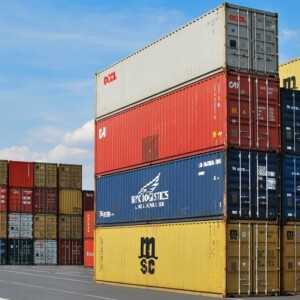Loading a shipping container might seem straightforward, but doing it efficiently and safely requires careful planning and knowledge. Properly loaded containers can save you money and time and ensure your goods arrive at their destination undamaged. This guide will walk you through how to load a shipping container efficiently, covering everything from preparation to stacking techniques and highlighting safety measures.
The Importance of Loading a Shipping Container
The art of loading a shipping container efficiently maximizes space and protects your goods during transit. Efficient loading reduces shipping costs, prevents cargo damage, and ensures compliance with shipping regulations. Understanding and implementing these practices is essential in logistics and supply chain management.
Step-by-Step Guide on Preparing Goods for Loading
Packaging Tips to Prevent Damage
- Use Durable Packaging: Use high-quality boxes and packing materials designed specifically for shipping. Durable packaging will protect your goods from damage during transit.
- Stack Boxes Carefully: Properly stack boxes, placing heavier ones on the bottom and lighter ones on top. Pack boxes closely to prevent shifting during transit.
- Place Heavy Items Next to Walls: Place heavier items like appliances and mattresses along the container’s wall.
- Protect Fragile Items: Use bubble wrap and packing peanuts to protect your fragile items. Securely pack your items so they do not move within their boxes.
Optimizing Space Within the Container
Stack your cargo and fill in any gaps to utilize all your space without compromising the safety and integrity of your goods.
Stacking Techniques and Load-Securing Materials
- Vertical Stacking: Stack boxes vertically to take advantage of the container’s height. However, make sure to stack boxes so they won’t shift during transit.
- Load Securing Materials: Secure your cargo with load bars, straps, and bracing plywood. Bracing plywood needs to follow IPCC measures. These materials prevent your cargo from moving and help distribute the weight evenly.
- Fill Gaps: Use dunnage bags or inflatable airbags to fill spaces between your cargo. Bags prevent your items from shifting and help stabilize your cargo.
- Store Hazardous Cargo Properly: When storing hazardous goods, follow IMDG regulations, separate incompatible goods, and avoid stowing cargo that could contaminate others.
How to Load A Shipping Container Safely
Safety should be your top priority when loading a container. Pay special attention to weight distribution and how you handle loading heavy items into your container.
Pay special attention to weight distribution; ensure that the container’s weight limit is not exceeded and that weight is evenly distributed to avoid tipping. When handling heavy items, use appropriate equipment and consider the health and safety of those involved in the loading process.
- Even Weight Distribution: Make sure your container’s weight is evenly distributed to avoid tipping.
- Handling Heavy Items: Use forklifts or cranes to move heavy items in and out of your container. Remember to lift with your legs when loading boxes to avoid injuries.
- Don’t Exceed Maximum Cargo Load: 20-foot shipping containers can handle up to 55,115.566 lbs (25000 kg) of cargo, while a 40-foot container can hold 67,240 lbs (30500 kg).
Managing the Loading Process
Using Loading Equipment and Hiring Help
- Loading Equipment: To load the container more efficiently, use forklifts, pallet jacks, or conveyors for larger loads.
- Professional Assistance: Consider hiring professionals for complex loads or when in doubt. Professionals will ensure your cargo is loaded efficiently and safely.
How to Load a Shipping Container On a Trailer
When loading a container onto a trailer, ensure that the container is properly secured and that its weight does not exceed the trailer’s capacity. This prevents any movement that could damage your cargo or cause accidents during transportation.
How to Load a Shipping Container On a Flatbed

Proper strapping and securing are even more critical due to flatbed trailers’ open nature. Secure the container firmly, and be mindful of height restrictions and load distribution to maintain stability on the road.
Conclusion
Loading a shipping container efficiently can lead to significant cost savings and reduce the risk of damage to your goods. Remember, loading a shipping container requires careful planning, execution, and attention to detail. By following the steps outlined in this guide, from preparing your goods for shipment to choosing the right loading equipment, you can ensure that your goods arrive at their destination in the same condition they were loaded. Whether you’re a seasoned logistics professional or new to shipping, these tips will help streamline your process, ensuring your goods arrive safely at their destination.




